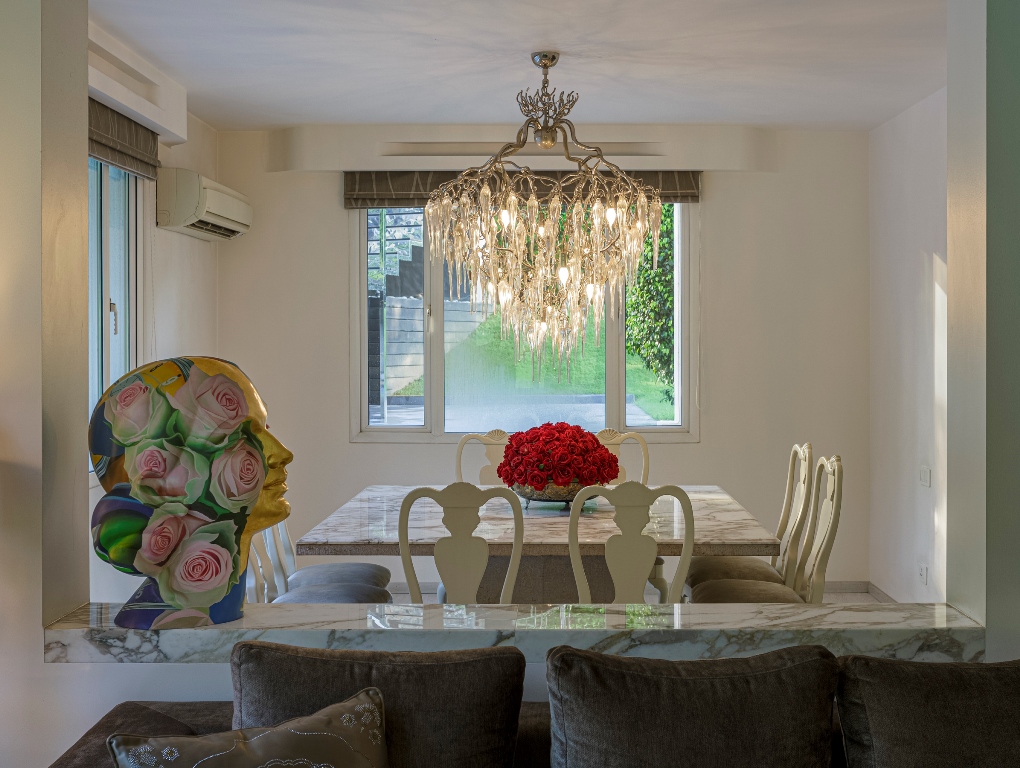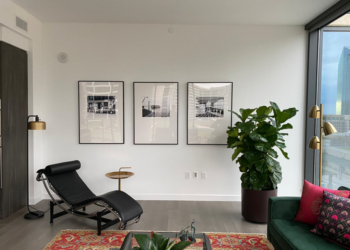What makes colour-loving Indians fall in love with achromatic interiors and how to make them interesting…
BY MALATI K. VIJAY
Colours are so much a part of Indian culture and psyche that we love surrounding ourselves with them and celebrating them through festivals. Vibrant hues have been the decorating raison d’être for Indians for centuries as our palaces and ancient mansions illustrate. This has, perhaps, to do with the warm climes we live in, as also the availability of plant dyes.
In the olden days, colours were indicative of wealth and class across the world, as only the rich could afford them. It’s only with the advent of chemical dyes in the 19th century that colours became more affordable. However, over the past century, as a quest for modernity and minimalism began, white became fashionable in the West. Whether as an antidote to brightly decorated spaces, or inspired by the Scandinavian aesthetic, achromatic palettes captured the imagination of designers and orphan.
Though trends are meant to be fickle, white interiors have somehow managed to stay relevant as there has been a consistent effort to reinvent and add freshness using new emerging materials and styles. Whether you want an all-natural look, understated luxury, industrial flair, or glamorous allure, white interiors have the answer.
White as a base for interiors is nothing new to India. Homes white-washed using lime have been common for centuries. However, in post-Independence India, as prosperity grew, the middle class’s penchant for bright hues came to the fore with people embracing them boldly to make a statement of affluence and status. In the globalised world, the western concept of minimalism and clean, sophisticated interiors seemed to have swept through India as well. The need for refinement has meant a restrained use of colour, and an inclination for strong tones has come to hint at ‘poor taste’.
While white interiors are considered ideal for cold regions with low dust pollution, like Scandinavia, where their reflective quality is beneficial to brighten up the gloomy atmosphere, for the rest of the world, its cool aesthetics and chic calming vibe are attractive.
White is a versatile palette that is adaptable to any style and offers infinite possibilities to inject culture- and context-specific details into interiors. It is no wonder that it has become popular with colour-loving Indians as well.


“Essentially, people are expecting more from their spaces now. They are particular about the overall feel and experience. With access to global trends, they are open to experimentation with diverse materials and understand the need for textures to enhance the experience. Whereas earlier, colour was a medium to make a designer’s style stand out. Also, people today want their spaces to have a more pronounced individuality, as against simply using colours that they may not associate with in the long run,” say Aneel Constantine and Deepti Chopra Constantine of Studio Constantine.
The growing popularity of white or neutral interiors is perhaps evident in the more than 1,000 projects designed globally by Essentia Environments. Their signature style celebrates the flamboyance of the neutral palette by playing with shapes, scale and textures to add a maximalist look to minimal interiors.
“Colour psychology plays a major role in impacting the human mind. Every colour has its own meaning and connection that varies across many factors. White is the colour that exudes calmness and purity, and it offers a beautiful canvas for showcasing the most exquisite details,” say Hardesh and Monica Chawla of Essentia Environments.



The advantages
While white may be a slightly difficult colour to maintain as dirt can show up more conspicuously on it, it has its advantages. It is soothing for hot and humid climates and with its light-reflecting quality, it introduces a sense of space in smaller areas. With a white canvas, mixing of colours, textures and patterns, and switching décor with changing seasons becomes a breeze.
“India is generally considered a country that loves vibrant hues. But a lot of designers and end users are moving towards neutral palettes as they go well with almost every sort of decor language and style. As opposed to prints and bold colours, neutrals do not catch the eye that much, so they appear serene, and you don’t get bored of them easily,” says Sachin Chauhan, director, Dialogues by Nirmal.
Shades matter
There is an argument that white is not a colour, it is just a shade. However, white light is composed of all hues in the light spectrum. And the white colour swatch throws up many shades—some cool, others warm. So it’s important to opt for the right shade. Also decide at the outset whether you want a crisp and refreshing vibe or a cosy ambience for your space.
Choosing warm tones helps you avoid the risk of rendering the interiors sterile. However, when working with stark white, adding wood tones and other natural materials like bamboo and rattan helps keep the space warm and inviting.
How to make it interesting
White is a shade that inspires creativity as it offers a blank slate to start with. Colours, textures, patterns, natural accents, there are many elements you can work with. You can either add a contrasting burst of colours or subtle variations.
“The simplest way is to focus on combining varied materials and textures, adding accent features, art and a measured degree of colour. This imparts immense freshness and interest to the spaces, and most of our clients enjoy their spaces for a much longer period of time,” say the Constantine couple. Essentia Environments employs tonal shades of white to evoke excitement. Layering in wood tones, luxurious veins of natural stones, metal tints, geometric patterns and scaled-up artworks bring boldness.
Wainscoting and moldings on the wall, patterned flooring, contoured furniture, shapely accessories, textured fabrics like bouclé and velvet—there are many details that ensure the space is well put together.
“Since white can be paired with any shade, keeping the main furnishings in neutrals and adding colour through cushions and throws works best,” says Chauhan.
Get the lighting right
All colours, including white, work differently in different lighting. What takes white interiors from boring to phenomenal is the lighting. Plan your lighting using chandeliers or ceiling lights, recessed LED lights and track lights, wall sconces, floor and table lamps to create a warm ambience. This brings the focus to the textures, accent colours, artworks and décor pieces, dramatically altering the way the space is perceived.
(The writer is a Bengaluru-based freelance journalist and content consultant. Formerly with the Times of India, Economics Times and Livingetc India, she writes primarily on design, art and lifestyle. She also enjoys giving a healthy twist to various cuisines)








